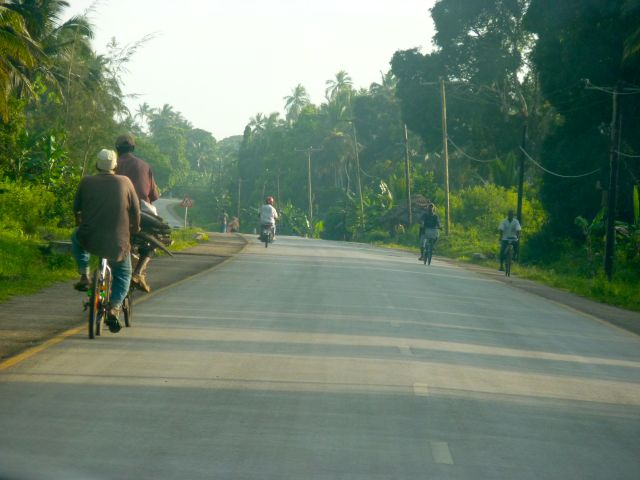- SunTour VGT rear derailleur
- Shimano Titlist front derailleur
- Huret shift levers (similar to Simplex retrofriction )
- Stronglight 93 crankset and chainrings
- SunTour Pro Compe freewheel
- Sedis “sedicolor” chain (gold, to match the freewheel!)
- Huret Jubilee rear derailleur
- Campagnolo Super Record front derailleur
- Simplex retrofriction (“teardrop “) levers
- Campagnolo Super Record crankset and chainrings
- Maillard 700 freewheel
- Regina chain
So what do those two lists have in common? Each of them comprised the drivetrain on one of my bikes. The first ran on an iteration of my Peugeot PX-10 when I repurposed it as a touring bike. The second graced the Colnago Arabesque I rode for much of my inglorious racing career!
One thing you’ll notice is that neither set was composed entirely of parts from the same company. Until the mid 1980s, that was the norm, as no component manufacturer—not even Shimano or Campagnolo—offered a truly complete “gruppo”: Neither company’s lines included chains, and Campagnolo didn’t offer freewheels.
Another reason why most were casseroles , so to speak, rather than purées is that, for the most part, one firm’s derailleurs could be used with another’s shift levers, freewheels, chainrings and chains. It also didn’t matter if you switched from, say, a six- to a seven-speed freewheel: As long as your derailleurs could handle the range (smallest to largest cogs) and the total gear difference (the combined range of your front chainrings and rear sprockets), it didn’t matter that the other parts weren’t from the same maker.
That all changed 40 years ago, when Shimano introduced SIS: the system with shifters that “clicked.” It
worked extremely well—as long as your freewheel (or cassette) cogs, chain, derailleurs, shifters and cables were all Shimano SIS. (Many of us soon discovered that Sedisport chains worked as well as, and lasted longer than, Shimano’s offerings.) By the end of the decade, nearly all new bikes had SIS or its variants, two of which I’ll mention. “If it doesn’t click, it won’t sell,” became a bike industry mantra.
Seemingly in a panic, Campagnolo and SunTour offered their own “click shift” systems. (SunTour actually made one in 1969. It reportedly worked well, but the still-relatively-small derailleur-equipped bike market wasn’t ready for it.) Both failed—Campagnolo’s Syncro system was panned as “Stinkro”—for essentially the same reason. While Shimano designed an integrated system, it seemed that Campagnolo and SunTour simply made indexed levers. The “clicks” didn’t always mesh with the gear change because they were the calibrated to the distance between the cogs.
Campagnolo’s Syncro wasn’t produced for very long and seems to have found popularity mainly among collectors. “Campy” was able to redeem itself during the ‘90’s, when it made an integrated system (with Ergo levers) that worked well. SunTour, on the other hand, never recovered from its failed system (and, to be fair, other missteps). Its reputation was made worse because bike-makers like Schwinn used their old stocks of French cables and chains that didn’t play nice with SunTour’s click shift.
SunTour’s fate is a particularly sad irony when you consider that a generation of cyclists like me could replace a malfunctioning Huret Allvit, Simplex Prestige or Campagnolo Valentino or Gran Turismo—or an ailing Atom or Regina freewheel—with something from SunTour without re-doing the rest of the bike.
Part of the reason why that was possible was “friction “ shifting, as Eben Weiss points out in his latest Outside article. He cites that compatibility as the reason why, after decades of using indexed shifting and a brief fling with electronic changers, he’s converting all of his bikes to friction shifting.
I may do the same. It wouldn’t be difficult, really.Of my seven bikes, five have derailleurs. (The other two include a fixed-gear and single-speed.) Two of the five shift with Simplex retrofriction levers. The other three—Dee-Lilah (my Mercian Vincitore Special), La-Vande (King of Mercia) and Vera (Miss Mercian mixte) have Dura-Ace 9-speed downtube levers. I’m using them in indexed mode but they can be converted to friction levers simply with a turn of the adjuster ring. I would do that, of course, if I were to use 8- or 10-speed cassettes instead of the 9s I’m currently running.
















